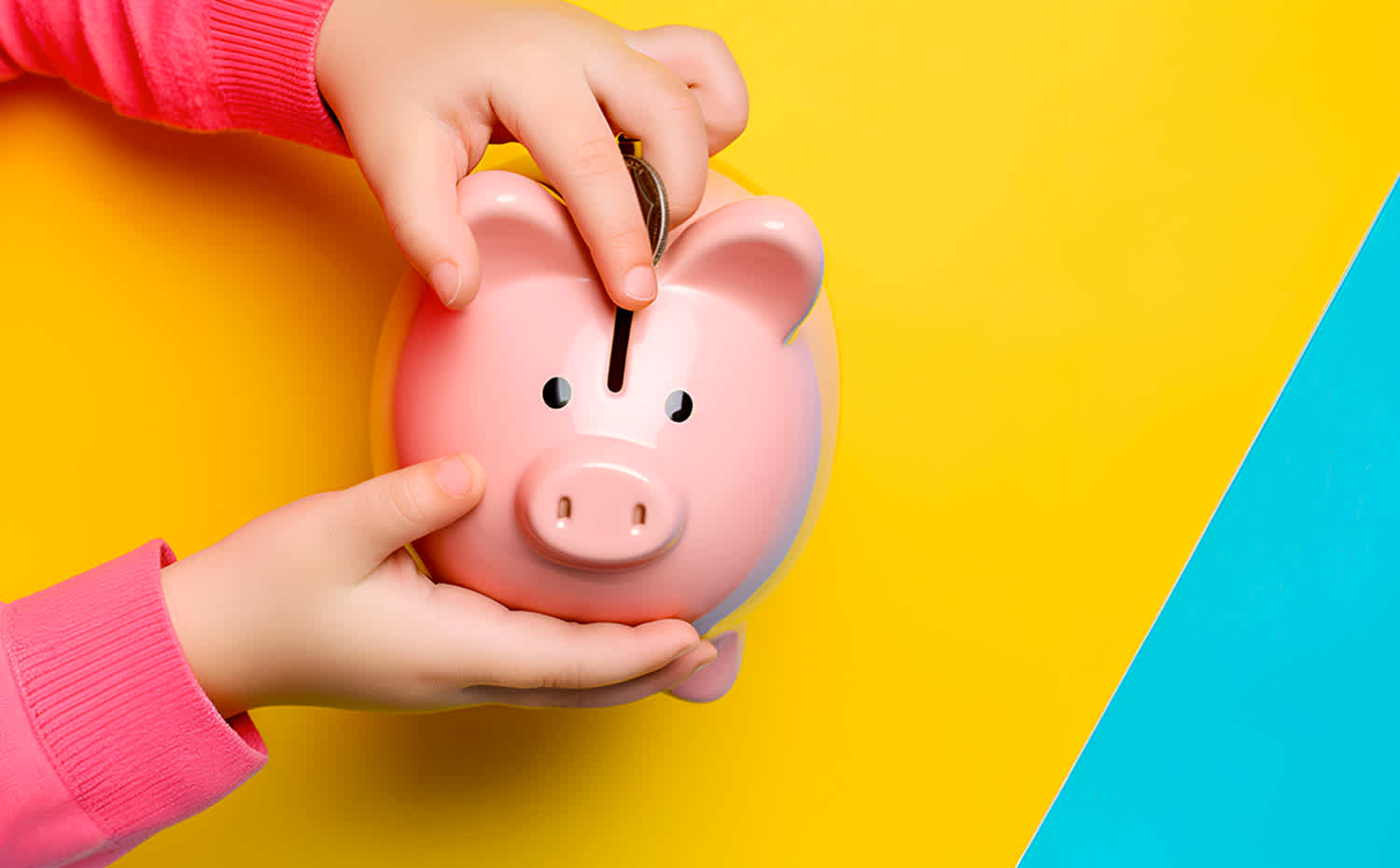How can you teach your child to save? 12 tips

Keytrade Bank
keytradebank.be
March 15, 2024
(updated December 03, 2024)
3 minutes to read
1. Lead by example
Parents and teachers are the major role models for children, including when it comes to finances. Adults who learned to deal with money as children stay within their means more easily later in life, build up less debt and save better. Dozens of studies have shown this. Children imitate adults – consciously and unconsciously. So if you lead by example, the chances are your child will copy that behaviour.
2. Talk about it
Simply giving them a piggy bank or opening a savings account is not enough. Talking about money is at least as important. Explain why you are saving, what you are saving for, how you do it exactly, how you make choices between what is necessary and things that are nice to have or do, how you budget, and so on. Talking about money can be very spontaneous and doesn't have to be like a lesson. Play at shops. Browse through brochures and compare prices. Carry out a bank transfer together. Or play a game of Monopoly. This can also provide valuable insights. The most important thing is to talk about money and savings now and again.

3. Consider some pocket money
You can give children pocket money once they have some understanding of money and can count a little; usually around the age of 5 or 6. Half a euro per week or less is enough to get started. The best way is to always give them the same amount, at a fixed time; pocket money should in principle never be given as a reward, or withheld as a punishment. Initially, children will want to spend their pocket money right away, or shrug and drop it into a pot. Over the years, they will realise that they can buy bigger things if they save.
4. Give them space to make mistakes
Think of pocket money as learning money. Let them get things "wrong". Don't try to correct them too much. It is better to make minor mistakes with small amounts at an early age than major mistakes with large amounts at a later age. Every "mistake" is a chance to learn. By getting pocket money and saving it (or not), children can gradually master financial skills, step by step.
This should come in handy later when they need to deal with expenses or investments that have a major impact on their lives, such as buying a house or starting a small business. Set a framework within which they have the freedom to do whatever they want with the money (e.g. anything except buying chewing gum). By setting clear conditions at an early age (no money left for that teddy bear because you spent it on sweets? Sorry, but that's the way it is.) you may prevent major problems later that you can no longer solve for your child.
5. Make savings visible
For young children, use a transparent pot in which they can see their money grow. This makes saving tangible and gives them an immediate visual reward for their efforts. Once they are a little older – 8–10 years old – you can also think about a savings account. For them, keeping a savings record on paper or in an app can help them see their progress.

6. Reward efforts
Give your child a little extra or add a bonus to their savings when they reach a goal you set. This not only stimulates saving, but also teaches them about interest rates and the benefits of leaving money to grow over time.
7. Involve them in financial decisions
When shopping or making decisions about big purchases, involve your children in the process. Show them how to compare prices, find discounts, and decide if something is good value. This helps them to think critically about spending.
8. Set savings targets
Don't just teach your child to "save for the sake of saving", but also to save for specific things. This might be something small like a toy car or something bigger like a new bicycle. By setting goals, they discover the satisfaction of saving for something they really want, and the patience needed to achieve it.
9. Give teens a loan if they ask for one
Are you short of money, but your teenager just has to have that new video game? Then give them a loan and act like a creditor. By giving them a loan and teaching them about interest, instalments and the responsibility involved in borrowing money, you prepare them to deal with financial realities. Set clear terms and treat it as a real loan (with a realistic interest rate). This once again teaches them the value of saving and the implications of debt.
10. Introduce them to investing
When your children are a little older, you can also introduce them to investing. In the long term, investments yield a higher potential return. Start with a simple explanation of equities, bonds and how investing works, the importance of diversification and long-term thinking. An investment plan for children is a perfect way to teach them about how the market works and the importance of patience and discipline when investing.
11. Encourage entrepreneurship
Encourage your children to find ways to make money themselves, such as doing chores for neighbours or a holiday job. This teaches them about work, taking the initiative, and the importance of managing their own income and expenses. Selling old things together can also be educational: it teaches them about negotiating, working out the value of things, and how supply and demand work.
12. Make saving fun
Put a picture of what your child wants on the fridge or in a place where everyone can see it. Or draw a savings thermometer on a large sheet of paper and hang it up. Divide the thermometer into 1 or 2 euro slices, and colour these in each time.
Or regularly sit with them to count up how much money is in the savings pot. Watching the money you have saved grow is motivating.
Want to get started?
Open a savings account for a child and start an investment plan


